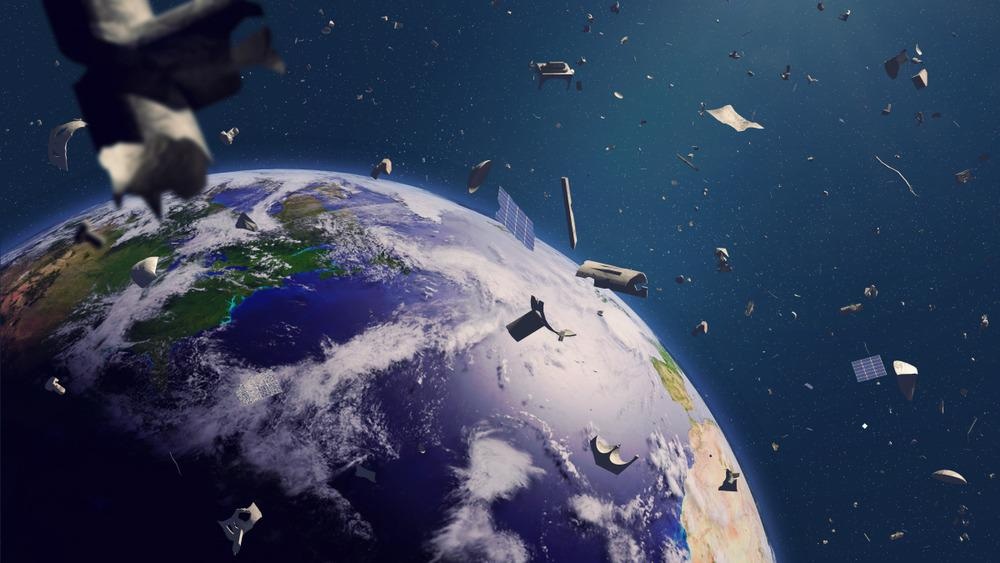The future of satellites is nanosatellites. However, the small size of these space technologies does not limit the impact they can have.

Image Credit: Dima Zel/Shutterstock.com
Ever since Russia launched the first man-made satellite in 1957, the Earth has seen a continuous rise in the number of satellites in orbit, with no signs of slowing. 2020 saw the launch of over one thousand new satellites, with 2021 already overcoming this number. As of September, 1,400 had been released.
One of the key reasons that the number of satellites launched has increased so rapidly is because advances in technology have made such space modules smaller and smaller.
As professor Adriano Camps, Universitat Politècnica de Catalunya and IEEC/CTE-UPC, points out in a paper for the journal Satellites Missions and Technologies for Geosciences¹, it isn’t like satellites were ever particularly big. Sputnik 1, for example, was a 58-cm-diameter metal sphere, weighing approximately 84 kg, with four radio antennas transmitting at 20.005 and 40.002 MHz.
One of the most important scientific achievements of Sputnik was the measurement of the density of the upper atmosphere and the gathering of information about the ionosphere — the ionized part of Earth’s upper atmosphere. This mission to investigate Earth from orbit first established with this first satellite has continued with its more recent and diminutive successors.
This Small Satellite Could Predict the Next Hurricane | Short Film Showcase
Video Credit: National Geographic/YouTube.com
What is a Nanosatellite?
Strictly speaking, a nanosatellite is any satellite with a mass from 1 kg to 10 kg. The term covers a range of mini-satellites, including CubeSats, PocketQuebes, TubeSats, SunSats, and Picosatellites.
The main advantage of these small satellites is they cost much less to launch. Their size means that one rocket can carry a multitude of nanosatellites; the second for the most units carried by one rocket is 120. The average nanosatellite costs around 575,000 USD to launch. In comparison, a satellite of a “standard” mass and size can cost over 575 million USD.
Whereas the early satellites that followed Sputnik all tended to have individual designs and custom-built parts, nanosatellites tend to follow the same set designs and often use “off-the-shelf” commercially available parts.Not only does this standardized approach mean that nanosatellites can be produced on a short time scale, but it also means that they can be launched from a standardized Nanosatellite Launch Vehicle (NLV).
Several of such vehicles are currently under development. This includes Virgin Orbit LauncherOne upper stage, the Nammo/Andøya North Star, and Vector Launch, which will see the Prospector 18 suborbital launch vehicle technology transformed into an orbital nanosat launch vehicle capable of delivering a 10 kg payload into a 160-mile orbit.
What Can We Learn About Earth From Nanosatellites?
Earth observation using orbital platforms has become an essential and effective tool for promoting sustainable development by assessing historical trends on Earth’s surface changes and their spatial correlation. As a result, there is a wide range of satellite systems with various radiometric, spectral, spatial, and temporal sensor resolutions currently observing our planet.
The advantages listed above mean that an increasingly large percentage of these observations are being conducted by groupings of nanosatellites called constellations.
Research that requires a high level of detail and frequent images to study dynamic land cover, oceanography, vegetation, and inland water is conducted with the PlanetScope constellation.
The ability to frequently provide updated information on the Earth’s surface has made these nanosatellites constellations invaluable in monitoring the development of anthropogenic driven climate-change impacts, such as forest fires, ice melting rates, and growth of algal blooms, and food production losses.
Due to how useful they are in tracking dynamic processes, one of the applications often suggested for nanosatellites is monitoring natural disasters.
What Does the Future Hold For Nanosatellites?
Currently, the production and deployment of nanosatellites are led by private industry, but the cost reduction of nanosatellites is allowing institutions outside of traditional space agencies like NASA and the European Space Agency (ESA) to play a role in the new age of space exploration.
One future proposal for a nanosatellite constellation is SatRevolution, which aims to launch more than one thousand nanosatellites to collect minute-level Earth observations. This would provide a huge amount of information that will require new ways of storage and data processing.
Of course, nanosatellites, especially in large constellations, can deliver problems too. For example, researchers are currently attempting to fully assess the impact of these constellations on our view of space from Earth’s surface.
Following the launch of 60 Starlink communication satellites in 2019, a workshop of astronomers and other researchers produced a report² that made suggestions that could limit the impact of nanosatellites on astronomy and the natural beauty of the sky at night. Recommendations included the reduction of both the number and brightness of nanosatellite constellations and the provision of up-to-date tracking systems.

Image Credit: Dotted Yeti/Shutterstock.com
Reducing the number of nanosatellites could also help offset another issue presented by the propagation of nanosatellites: the risk of collision with space debris.
The ESA³ warns that our current approach to filling a low-Earth orbit with technology is unsustainable as helpful as nanosatellite constellations are. Rectifying this means space operators have to take responsibility for the disposal of nanosatellites after their mission is completed as well as ensuring that explosive collisions are avoided by providing technology with only as much fuel as they need to carry out their primary role.
Another solution could be systems allowing nanosatellites and their larger counterparts to navigate debris, preventing collisions. The ultimate aim is to ensure these innovative examples of space-age nanotechnology do not just become space junk.
References and Further Reading
Camps, A., (2020) Nanosatellites and Applications to Commercial and Scientific Missions. Satellites Missions and Technologies for Geosciences. Available at: https://doi.org/10.5772/intechopen.90039
Walker, C., et al. (2020) Impact of Satellite Constellations on Optical Astronomy and Recommendations Towards Mitigations. [Online] SATCON1 Scientific Organizing Committee. Available at: https://aas.org/sites/default/files/2020-08/SATCON1-Report.pdf
ESA, (2021) ESA's Space Environment Report 2021. [online] Available at: https://www.esa.int/Safety_Security/Space_Debris/ESA_s_Space_Environment_Report_2021
Disclaimer: The views expressed here are those of the author expressed in their private capacity and do not necessarily represent the views of AZoM.com Limited T/A AZoNetwork the owner and operator of this website. This disclaimer forms part of the Terms and conditions of use of this website.